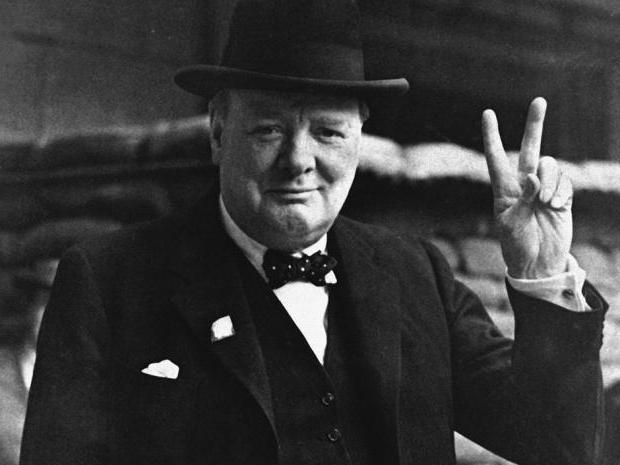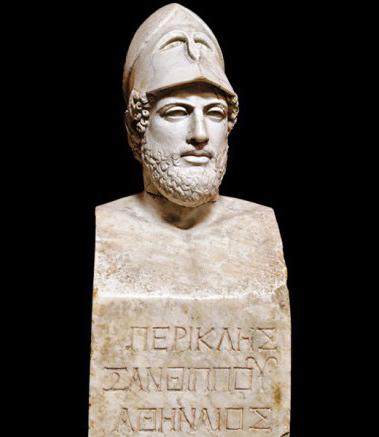A powerful and expensive sculpture of Ancient Greece
On the religious beliefs of the ancient Greeks knowsthe whole world. Memories of this have survived not only in the image of legends and myths, but also in the material form of temples and sculptures, or rather, their remains. After so much time, not all the memos managed to be saved, but some we know from ancient Roman copies. The sculpture of Ancient Greece was distinguished for its splendor and wealth.
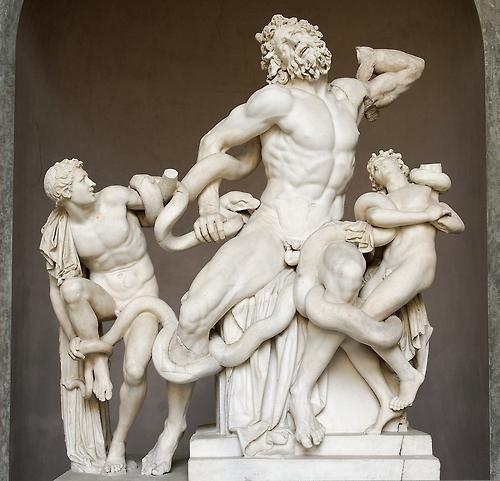
Early development of ancient Greek sculpture
We will find out who was immortalized as sculptures,who is worthy of such an honor? Since the ancient peoples, and not only the Greeks, were inveterate pagans, and attached great importance to their faith, they depicted only the gods.
Sculptures of Ancient Greece, until the 6th century BC. e., created from expensive materials, such as marble, ivory, dressed the gods only in gold clothes. What did the Greeks do to appease Olympus!
Ancient Greece, whose sculpture already in the 7th-6th centuryBC. e. reached significant peaks, was the cultural center of the ancient world. One only has to remember the architectural structures in the form of temples, and some of them are on the list of Seven Wonders of the World (the famous columns from the temple of Artemis in Ephesus). Let us return to the ancient Greek immortalization of the gods, which in the early days were portrayed majestically, in full growth.
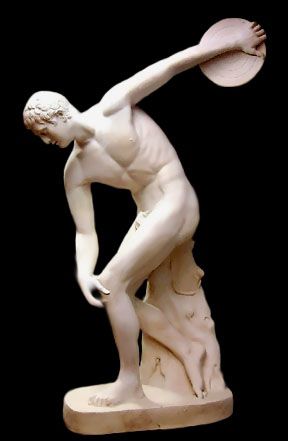
It is noteworthy that the gods were always depictedbeautiful. What are they, these gods? Beauty for the Greeks meant power. Elegance and wasp waist were still not known canons of beauty. That is why the inhabitants of Olympus were portrayed in large sizes, with a strong body, pumped up by hands and feet, huge eyes, head, lips.
You remember the statue of Zeus Olympic, one of theSeven wonders of the world? Its dimensions confirm that the supreme god should be more beautiful than the others and be larger. The statue itself was built of ivory, and clothes "sewed" for Zeus from no less expensive material - gold.
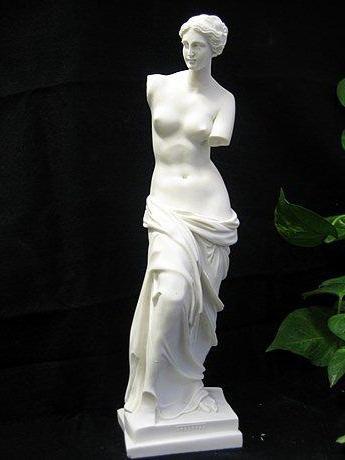
Late Sculpture of Ancient Greece
From the 5th century BC. e. the image of straight-sitting or frozen sculptures in a straightened pose ceased. The sculpture of Ancient Greece has changed significantly. Firstly, not only gods were to be depicted, but also heroes, warriors, that is, ordinary mortals. Secondly, marble and ivory have become a thing of the past, metals, in particular bronze, have gained popularity. Thirdly, the straightened postures and large sizes of parts of the body have outlived their own, the image of nudity has become beautiful. A lightly falling cloak and a loose pose only gave grandeur to the sculpture.
Remember Discobolus or the statue of Venus de Milo fromMarble, which is still stored in the Louvre. The sculpture of Ancient Greece in the course of time acquired new features, but from this it did not become less majestic. She was admired by the Romans conquering Greece, they completely adopted their culture and religion, we admire her and we are still.


